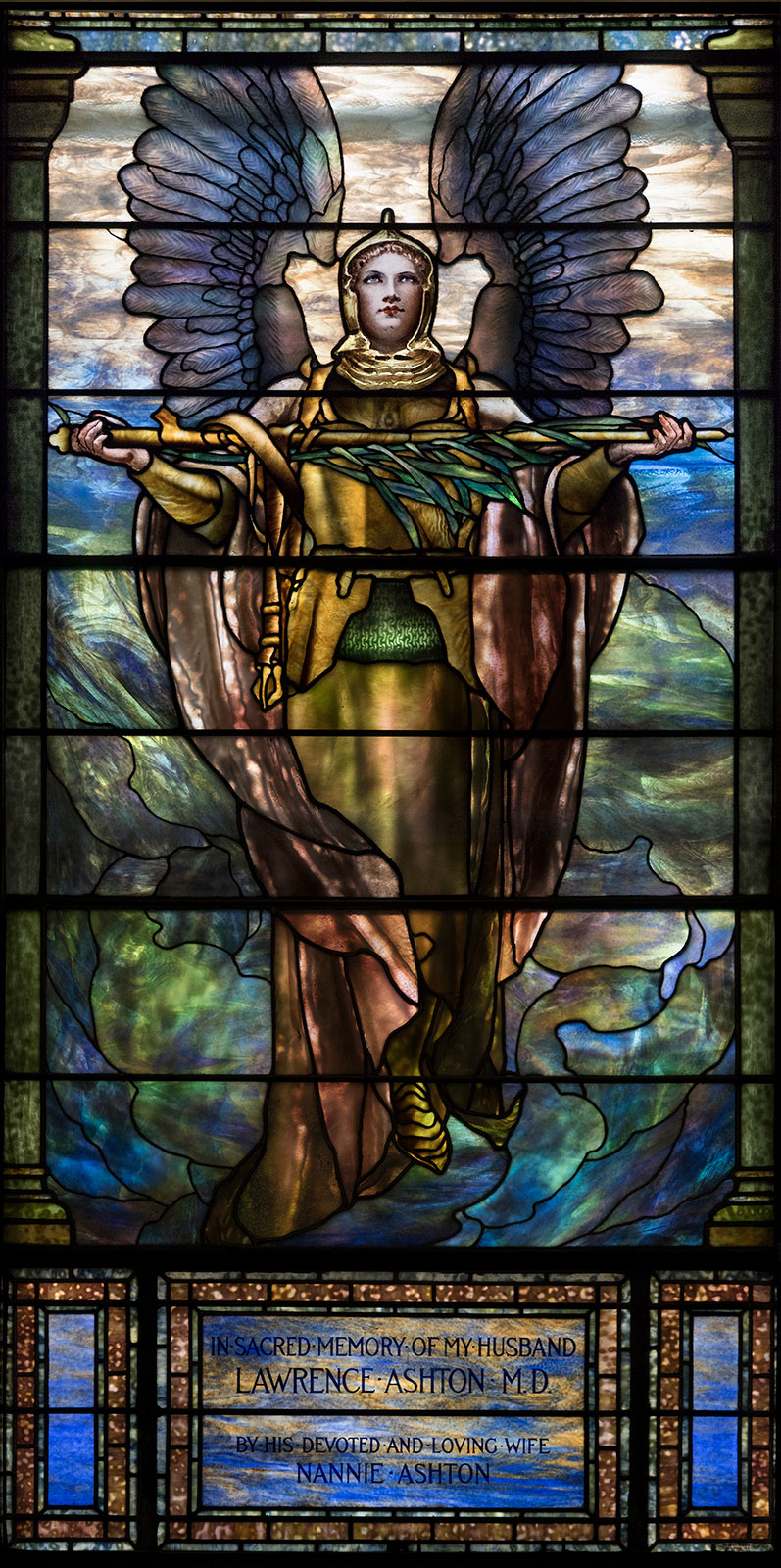
Lower Subject: Angel of Victory or Guardian of Medical Science
Inscription: none
Dedication: In memory of Lawrence Ashton, M.D.
Description: Dr. Ashton was one of the most prominent doctors of his day, born in King George in 1845 and received his medical education at the University of Washington, DC with further studies at the University of New York. He practiced in Fredericksburg for 15 years. In 1887, he married Miss Nannie Green, daughter of Capt. Duff Green.
Duff Green was a prominent inspector of flour in Falmouth. In 1836, he constructed a cotton factory on the lot. It became the Elm Factory and powered by Steam and employed at least 40 people and continued even after his death
As vice-president of the Virginia Medical Society for 8 years and president for one, Dr. Ashton was the originator of the law to regulate the practice of medicine in Virginia. The window was dedicated by his wife in September 27, 1917
Maker/Date: Tiffany Studios, New York, 1917
Description – The window depicts a triumphant angel in a rich gold robe with iridescent wings.
The angel is wearing a breastplate over armor and holding a sword and buckler which symbolize the victory of the triumphant march into Jerusalem on Palm Sunday. The angel holds a gold staff with a palm, possibly representing the guardian angel of medical science, a suitable tribute to a doctor. The palms also symbolize the victory of the triumphant march into Jerusalem.
Techniques The folds in the robe is another use of drapery glass. The flowers encircling the angel demonstrate Tiffany’s use of many textures and shapes of glass to envelop the angel which will cause of a variety of colors throughout the day. This glass is called opalescent glass, glass with more than one color being fused at manufacture.
This window may have been designed by Tiffany’s Frederick Wilson. A portraitist and cartoonist armed with an inexhaustible knowledge of Old and New Testament iconography, Wilson emerged as the firm’s most prolific and talented designer of figural windows and mosaic friezes from 1894 to 1923, producing the bulk of its church memorials until his departure in 1923.